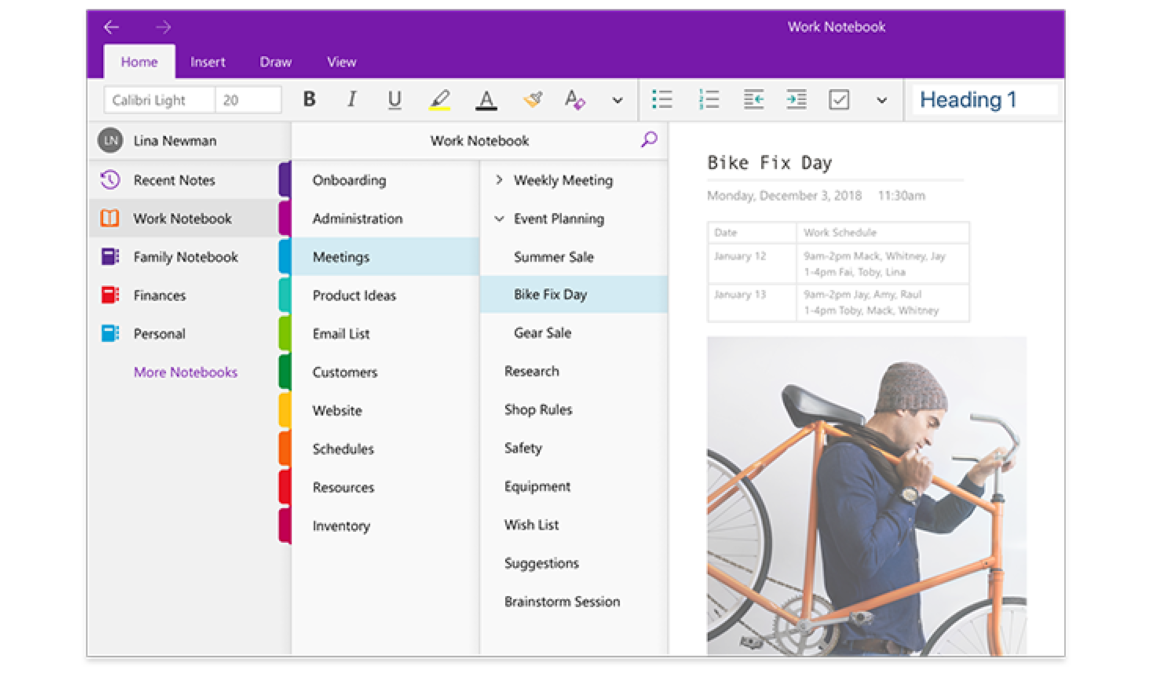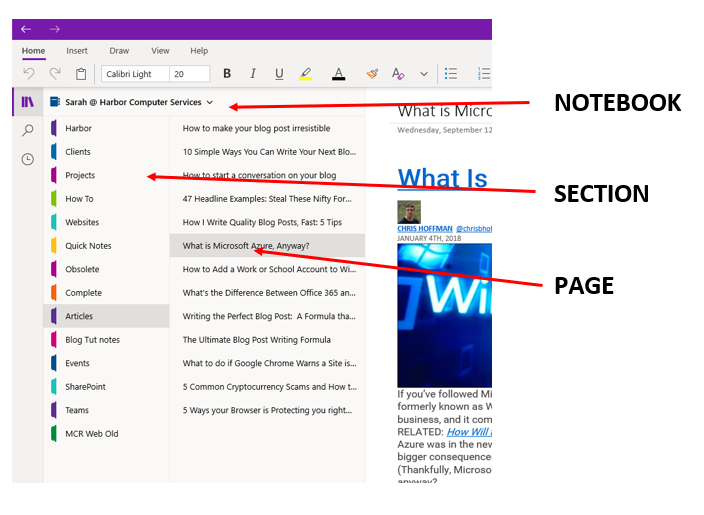
For example, you could store general business information in one notebook, sensitive business information in a second notebook, and personal information in a third notebook.

You can store all your information in one notebook or create multiple notebooks for different purposes. OneNote stores information in files that are referred to as notebooks. Draw or handwrite notes (by using your finger or a stylus).Insert mathematical equations into notes.Generate a summary of tagged notes by storage location or date.Search notes by tag, by author, or by date, and search the content of audio recordings and the text in images.Capture and insert screen clips from within OneNote.Record and embed audio and video recordings directly on a page, and coordinate the playback of recordings with your written notes.Integrate tagged tasks with your Outlook task list, and send content from Outlook to OneNote.Edit embedded files from within OneNote.Merge note containers, and select full notebook pages.Create pages based on content-driven or artistic templates.This doesn’t change the name of the folder that contains the notebook content. Change the display name of the notebook.Change the color of a notebook, which affects the notebook cover.You can use OneNote 2013 on a computer running Windows to do the following: The Windows version of OneNote has the most functionality. Play audio and video recordings that were embedded in notes by using a desktop version of OneNote.įor more information about OneNote Online, visit /en-us/library/onenote-online-service-description.aspx.Change the color of a section, which affects the section tab and page navigator background.



Here is a brief comparison of the features you can use in the iPad, Office Online, and Windows versions of OneNote. The Windows version of OneNote has significantly more features than any of the others. OneNote is available for use on many platforms, including Windows, Windows Phone, Mac, iPad, iPhone, Android, and Internet browsers.


 0 kommentar(er)
0 kommentar(er)
